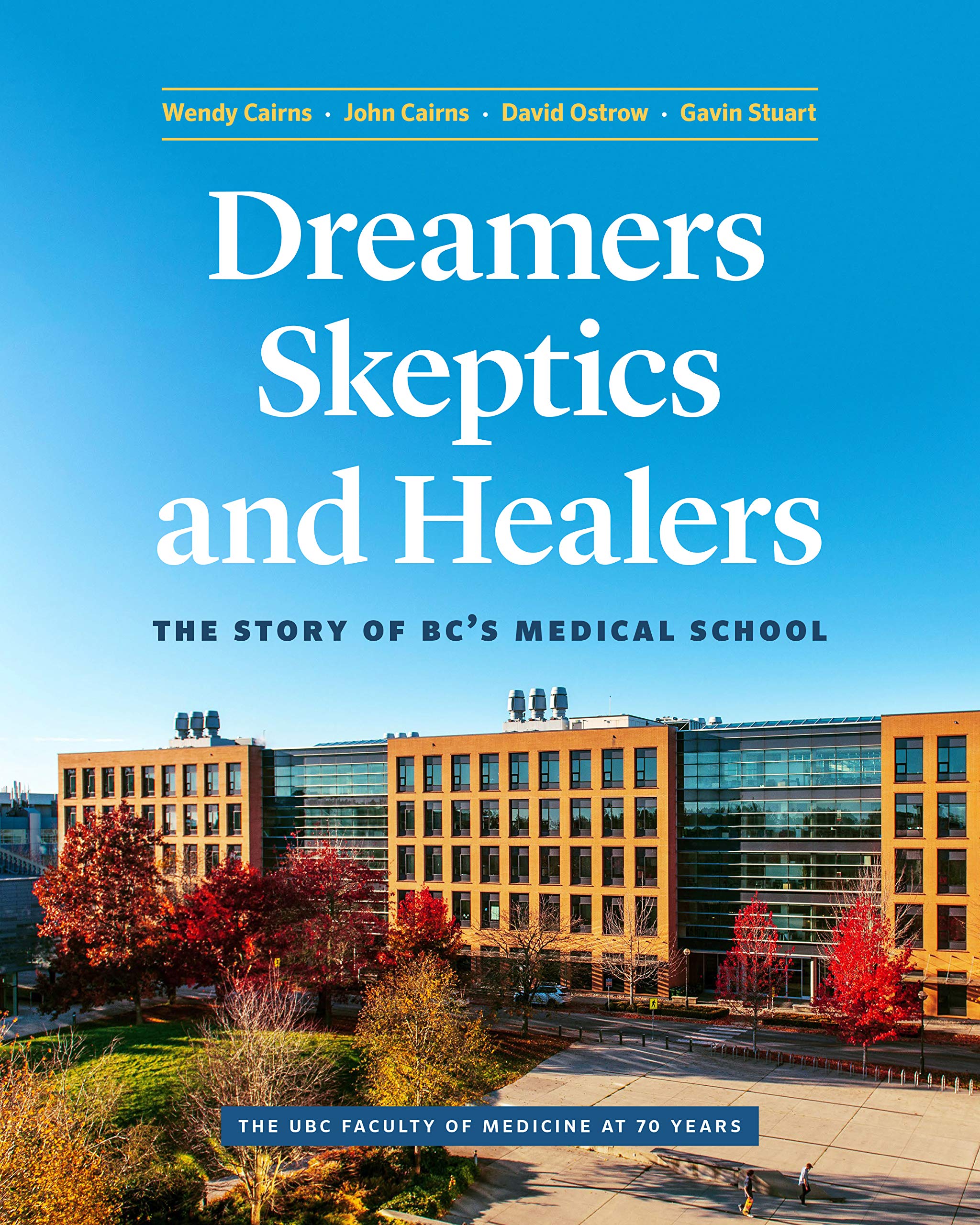Book review: Dreamers, Skeptics, and Healers: The story of BC’s medical school
 |
|
Dreamers, Skeptics, and Healers: The story of BC’s medical school By Wendy Cairns; John Cairns, MD; David Ostrow, MD; Gavin Stuart, MD. Vancouver: Page Two Books, 2021. ISBN 978-1-989603-89-5. Hardcover, 224 pages |
The mastermind behind this history of UBC Medical School was UBC graduate Wendy Elizabeth Cairns. After her premature death in 2018, her husband and former dean of the medical school, Dr John Cairns, along with Dr David Ostrow and Dr Gavin Stuart, took up the pen to expand on and complete the process of turning Wendy’s rich research materials into this book. The title, Dreamers, Skeptics, and Healers, accurately reflects the history of a medical school that admitted its first class in 1950 after years of controversy and is now counted among the largest and most respected medical schools in North America.
I arrived in Vancouver in 1947 as an 18-year-old immigrant, full of hope that I might be able to enter medical school here. I learned with considerable anxiety that there was no medical school in BC, and that the likelihood of one opening soon was not very good. Only 4 years later, I was in UBC Medicine’s second graduating class of 60 students, when the school was still located in former army barracks. Skeptics were abundant from before the school opened and throughout its early years; it was the dedicated deans, scientists, and healing practitioners who brought the dreams to reality.
This very handsome, easy-to-read book includes wonderful pictures of many of the doctors, healers, scientists, and administrators who made the school what it is today. The book is divided into seven parts. It starts with Dr John Sebastian Helmke’s ideas for a health service, for a then fledgling population, in the 1870s. And it ends with a proud celebration of the research and innovation that has taken place over the past 70 years, with ideas for the future.
In between are accounts of how the school took off after years of arguments and disappointments, the unavoidable growing pains, and how it came into a respected early maturity, with some unexpected turnarounds, to become a world famous medical school (the Faculty of Medicine is now home to more than 4500 undergraduate, graduate, and postgraduate students), with students learning the art and science of medicine in almost every district of BC.
I had the feeling of reliving my student days as I read the sections on how Dr Kerr and Dr Walters conducted our oral exams at the bedside, how Dr Friedman, the head and professor of anatomy drew his diagrams on the blackboard with two hands at the same time, or how Dr John William Boyd, head and professor of pathology, entertained us with his witty lectures.
Each dean’s vision and legacy for the school over 70 years is sensitively explained. Some have come to life; some have not. For example, Dr McCreary’s vision for an “if they learn together, they will work together” teaching program for all health professionals, for the purpose of strengthening integrated patient care by health sciences teams, is still not a reality.
Each section also introduces the leading figures in the various basic science and clinical faculties. The pictures of Dr Copp of physiology, Dr Williams of dermatology, Dr Bryans of obstetrics and gynecology, Dr Slade of family practice, and many others will evoke warm memories in former students. And, of course, there is the politics. I was at the tense locked-door meeting described in the book with Dr Pat McGeer, a graduate of the school, accomplished neuroscientist, UBC faculty member, and BC’s Minister of Education at the time. He issued an ultimatum to the university: come up with a plan for increasing the number of medical students and a plan for a campus hospital or lose out on an unclaimed federal fund that was about to be closed. Student numbers were increased.
The book will rekindle memories for some and bring an understanding to nonmedical readers of the extreme complexity of gathering and maintaining the enthusiasm of dedicated practitioners, scientists, students, and other health-related professionals with the goal of understanding nature and serving mankind.
—George Szasz, CM, MD

